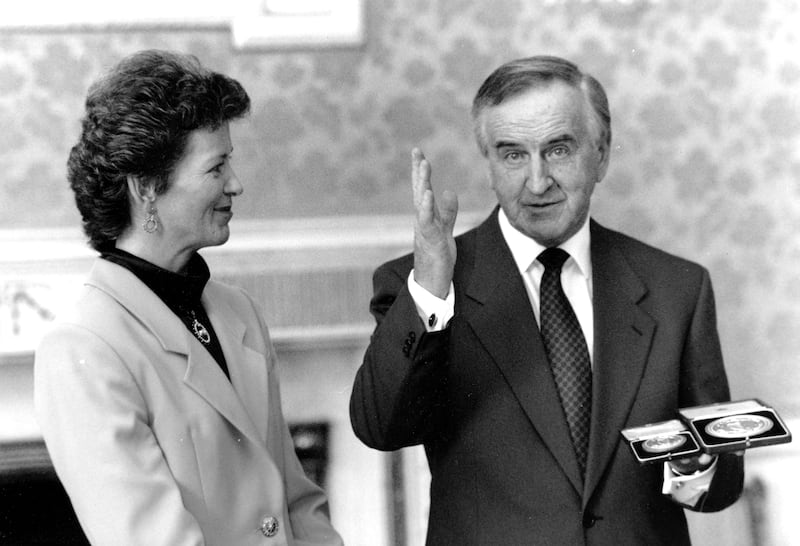An analysis by Mary Robinson of problems in Somalia 30 years ago when she was president was “full of value judgements” and “somewhat rhetorical and emotional”, according to newly-released State papers that highlight political tensions at the time over the independence of her office.
In October 1992, two years after becoming president, Robinson made a high profile visit to Somalia which was then ravaged by a famine and civil war that lasted for decades. After visiting refugee camps in the country, she gave an emotional press conference in which she made some implicit criticisms of the UN’s approach to the refugee camps and did not hide her anger about conditions there.
Robinson wrote up a diary-type book of 53 pages about her visit to the country. The book was sent to the Department of the Taoiseach for its comments.

In his analysis, Frank Murray, then assistant secretary general at the department, said he had no difficult with 48½ pages of the document, but the other 4½ pages were “in a different league”.
RM Block
Robinson suggested a “people to people” approach to dealing with the problems of Somalia and that the country’s problems could “not be left exclusively to the UN, the EC (European Community) and governments of the world, although they were crucial to political action”.
Such an approach, Murray suggested, was outside Robinson’s brief as president. “The President, of her own account, cannot advocate policy changes in the international relations sphere no matter how well intentioned her motives or how worthy the cause involved,” Murray wrote on November 22nd, 1992. “Her remarks have the potential to cause controversy at international level and could perhaps have implications for our relations with the UN.”
Murray took issue with Robinson’s analysis of who was to blame for the Somalian civil war. The blame could be put on the people themselves, the former colonial powers or on the Cold War. “It is most likely that a combination of all these factors is involved. The reference in the text that the President has no answers to the questions she raised does not reflect well on herself in all the circumstances.”
Robinson’s belief that it was “not a difficult problem to solve” was a “somewhat sweeping statement made following a short managed visit to Somalia (and) underestimates the extent of the problem”.
Taoiseach Albert Reynolds made it clear to Robinson that she could be seen to be creating government policy when she visited the UN secretary-general Boutros Boutros-Ghali in New York in October 1992.
A letter in the files from government secretary Dermot Nally showed the government jet was not available to the president on October 3rd and 5th as it was needed for a series of engagements by Reynolds. Among the engagements he was due to fly to was the Longfordman’s Dinner on October 3rd in Birmingham.















